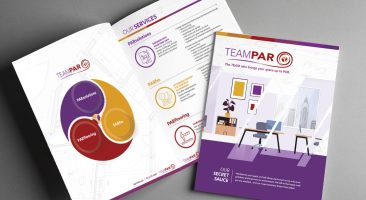Building an Inclusive Web: How to Make Your Website ADA Compliant

Why ADA Website Compliance Matters:
The Americans with Disabilities Act (ADA) of 1990 stands as a cornerstone of civil rights legislation in the United States, ensuring accessibility not just in physical spaces but also in digital ones. Just as buildings are required to provide ramps or elevators to accommodate those with physical disabilities, websites must also offer accessible features to ensure all users, regardless of their physical abilities, can navigate, understand, and interact with your website.
According to research, 71% of web users with disabilities will leave a website that is not accessible.1 In fact, in 2023, there were 4,605 ADA-based digital accessibility lawsuits filed in the U.S., marking a 14.1% increase from 2022.2 Ensuring your website is ADA compliant is both a legal necessity and a positive step towards inclusivity that opens your digital doors to all users.
What Makes a Website ADA Compliant?
An ADA-compliant website means that you are making the information on your site available and accessible to Americans with a range of disabilities, such as hearing or vision impairment. Considering pretty much everything can be found on the internet these days, those with disabilities should have equal access to that information.
The WCAG defines three levels of accessibility compliance, each offering varying degrees of support for users with disabilities:
- Level A: Think of Level A as the entry-level requirement for ADA compliance. It tackles the most significant barriers to basic accessibility, helping some users navigate your site. However, it is just the beginning; this level addresses only the most critical accessibility barriers and does not meet all accessibility needs. Understanding and implementing Level A is the first step in making your website ADA compliant.
- Level AA: This is where most websites aim to be. Level AA clears away the more common obstacles that might trip up users with disabilities, making your site more usable and pleasant. It’s considered the go-to standard for ADA website compliance.
- Level AAA: This is the pinnacle of web accessibility. Adopting Level AAA means you’re committed to providing the best possible access. But be warned—it’s tough to achieve. The criteria are stringent, and not all content can meet them.
Who Should Have an ADA-Compliant Website? Everyone.
Virtually any business or public entity with an online presence should strive for an ADA-compliant website. That said, the ADA outlines specific types of entities that are required to ensure their websites are accessible. They include:
- Private employers with 15+ employees
- Public entities at state and local levels
- Businesses operating for the benefit of the public and non-profits
Failing to achieve ADA website compliance not only risks potential lawsuits and fines, but also damages your brand’s reputation, signaling a disregard for inclusivity and equal access.
How to Tell if a Website is ADA Compliant
You can quickly assess if a website meets some ADA compliance standards with these preliminary checks:
- Quick keyboard test: Try navigating the website using only the keyboard. A fully navigable site without requiring a mouse suggests good accessibility practices.
- Spot check for alt text: Hover over images to see if a descriptive text appears.
- Check for contrast ratio: Visually inspect text against its background. It should be easily distinguishable.
- Scan for media accessibility: Look for closed captions or transcripts for videos.
- Use simple automated tools: Employ tools like the WP ADA Compliance Check Basic plugin for WordPress, which can quickly identify any glaring compliance issues.
How to Make a Website ADA Compliant: Four Essential Steps
Ensuring your website meets ADA compliance involves a series of practical steps aimed at making your digital presence accessible to everyone. Here are the essential actions to take:
- Conduct an accessibility audit: Start with a thorough audit to identify accessibility barriers on your website. This helps pinpoint areas that need improvement.
- Address the accessibility issues found during the audit: Tackle the problems identified in your audit, such as:
- Adding alternative text to images
- Enhancing color contrast for better visibility
- Ensuring keyboard navigability for all interactive elements
- Providing captions for videos
- Labeling form elements clearly for screen readers
- Maintain compliance: Stay updated with the latest ADA and WCAG guidelines, conduct regular reviews to ensure new content and features are accessible, and train your team on accessibility standards and best practices.
- Hire an ADA-compliant consultant: Engage an expert who specializes in web accessibility to help navigate the complexities of ADA compliance—from the initial audit and recommendations to implementation, training, and ongoing support.
Tips on Staying ADA Compliant with WordPress
Maintaining ADA compliance on a WordPress website requires specific measures that leverage WordPress’s unique features and capabilities. Here are targeted tips to ensure your WordPress site remains accessible:
- Regularly update themes and plugins: Keep your WordPress themes and plugins updated. Specifically, use themes that are tagged as ‘accessibility-ready’ in the WordPress Theme Directory, and ensure that plugins used to enhance accessibility are kept up-to-date with the latest standards.
- Use accessibility plugins: Implement plugins like the WP ADA Compliance Check Basic, which scans your website to identify accessibility issues.
- Train your team: Educate your content team on WordPress’s accessibility features, such as using the Gutenberg editor for accessible content creation, ensuring proper heading structures, and utilizing accessible media elements like captions for videos and alt text for images.
- Consult with accessibility experts: Partner with ADA website compliant consultants who specialize in WordPress accessibility. These experts can offer more nuanced insights specific to WordPress, helping you optimize themes, plugins, and custom code to meet compliance standards.
- Include a feedback mechanism: Implement a feedback system within your WordPress site that allows users to report accessibility issues directly. Plugins are available that can facilitate this process by providing forms or direct communication links.
At Paradigm Marketing and Design, we believe everyone should have equal access to websites. With our advanced experience in ADA compliance and custom web development, we can help you design and maintain a website that is accessible to all users. Contact us today to ensure your site meets applicable accessibility standards or to learn more about our web design services and solutions.
(1) https://shorturl.at/2lmV1
(2) https://pixelplex.io/blog/web-accessibility-statistics/

















 Phone:
Phone: